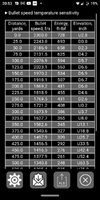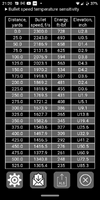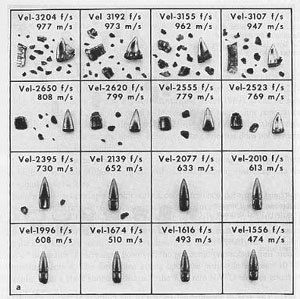I'm going to offer up an opinion that's not popular here. There will be name calling and objects thrown.
But, I fear not, for I wear the Belt of Truth...
The 10" and shorter barrel AR's with ball are are 50yd guns. This is based on the required velocity of fragmentation, the major wounding mechanism of ball ammo, which is 2700fps. Otherwise, you have .22 penetration only, which an above chart demonstrates. And the problem is worse with M855 vs M193.
This issue is one of the reasons for complaints by the military of inadequate stopping power, a combination of 14" M4 barrels and M855 ammo. M855 ammo requires
more velocity to fragment as it was designed for penetration, but going to the M4 barrels
reduced velocity. The combination reduced the effective range of the system.
If I were going to use a shorty AR, I would either use M193 or one of the 75-77gr OTM rounds. M193 starts at a higher velocity, but, even the M193 rounds loses a lot of velocity in short barrels. The OTM rounds depend on expansion rather than fragmentation and can operate at a lower velocity.
Yes, the rounds not fragmenting will still kill you, but how quickly? Every second your enemy stays functional is a second they can continue shooting at you. For an analogy, hitting a deer with a broad head vs a field point. How much run or fight will one have compared to the other?
From Ammo Oracle...
Introduction
Testing by combat surgeon Col. Martin L. Fackler, MD (USA Medical Corps, retired), determined that M193 and M855 bullets need to strike flesh at 2,700 feet per second in order to reliably fragment. Between 2,500 fps and 2,700 fps, the bullet may or may not fragment and below 2,500 fps, no significant fragmentation is likely to occur. If there isn't enough velocity to cause fragmentation, the result is a deep, 22 caliber hole, except an area where the yawing occurred, where the diameter of the hole grows briefly to the length of the bullet.
M193 rounds after close encounters with ballistic gelatin at various velocities. (Fackler)
Assuming true M193 or M855 ammo, velocity is the key. Velocity is dependent on barrel length and environmental conditions.
As barrel length increases, the bullet is propelled faster by the expanding gasses in the barrel, imparting more velocity on the bullet, resulting in a longer range before a fired bullet drops below 2700 fps. A shorter barrel imparts less velocity, and therefore the bullet has less range.
Temperature, altitude and humidity are other factors. As temperature or altitude increases, air becomes less dense and bullets travel faster. Contrary to common conceptions, as humidity increases air also becomes less dense and helps bullets retain velocity.
It is important, then, to keep in mind that any statistics given can only be approximate and can be affected by a wide range of factors. But as a baseline, these numbers are what you could expect for 75° F, 25% humidity, at sea level, from various barrel lengths:
| Distance to 2700 fps | 20" Barrel | 16" Barrel | 14.5" Barrel | 11.5" Barrel |
| M193 | 190-200m | 140-150m | 95-100m | 40-45m |
| M855 | 140-150m | 90-95m | 45-50m | 12-15m |
I'm reminded of a video I saw of an enemy combatant in the sand box. He was preparing to fire and RPG when he was struck by multiple rounds which penetrated his body and struck the ground behind him. He stumbled, but then resumed his attempt to fire the weapon, until he took a round to the head.
Just sayin'...










